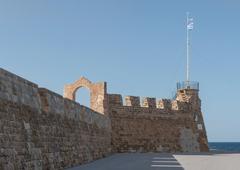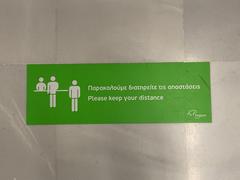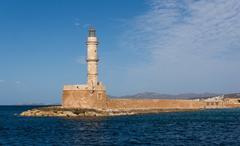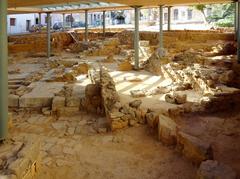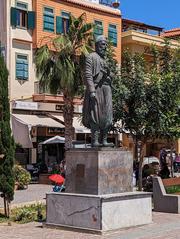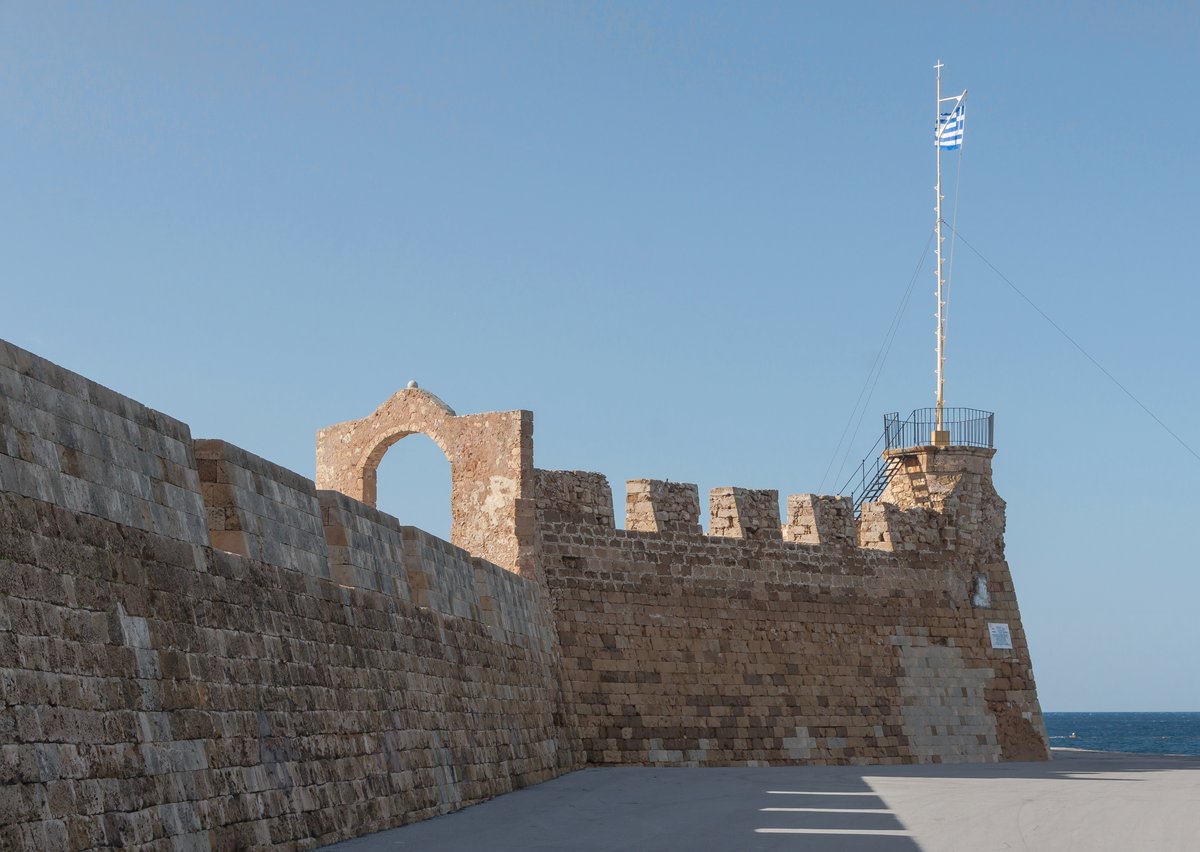
Firka Fortress Visiting Hours, Tickets, and Travel Guide – Chania Historical Sites
Date: 14/06/2025
Introduction: Firka Fortress and Its Historical Significance
Standing sentinel at the entrance of Chania’s renowned Venetian harbor, Firka Fortress is a cornerstone of Crete’s tumultuous and culturally rich past. Constructed in the mid-16th century by the Venetians to guard against Ottoman expansion, this imposing fortification reflects the island’s strategic importance and military ingenuity. Over the centuries, the fortress witnessed the changing tides of power—from Venetian to Ottoman rule—and played a pivotal role in Crete’s unification with Greece in 1913. Today, Firka Fortress is not just a monument to military history but also a vibrant venue for cultural events and the home of the Maritime Museum of Crete. Its panoramic views, educational exhibits, and architectural splendor make it an essential destination for any visitor to Chania (greece.terrabook.com; Maritime Museum of Crete; Chania Municipality).
Table of Contents
- Introduction
- Historical Overview
- Architectural Features & Preservation
- Visiting Firka Fortress: Practical Information
- Frequently Asked Questions (FAQ)
- Conclusion
- Explore More
- References
Historical Overview
Venetian Construction & Strategic Purpose (16th–17th Centuries)
Firka Fortress, originally known as Revellino del Porto, was constructed by the Venetians around the 1580s as a fundamental part of Chania’s defensive system. Its solid stone walls, angular bastions, and six vaulted casemates were designed to house cannons protecting the vital harbor entrance. The fortress included a vaulted reservoir to collect rainwater, ensuring the garrison’s survival during sieges (greece.terrabook.com; incrediblecrete.gr).
Ottoman Conquest & Transformation (1645–1898)
Following the Ottoman conquest in 1645, the fortress was renamed “Firka,” meaning “barracks” in Turkish. The Ottomans maintained its military purpose while converting parts for administrative use and as a prison—a role it fulfilled until the 20th century (greece.terrabook.com).
Symbol of Cretan Autonomy & Union with Greece (19th–20th Centuries)
Firka Fortress became a symbol of Cretan resistance and aspiration for independence. On December 1, 1913, it hosted the landmark ceremony marking Crete’s union with Greece. The raising of the Greek flag at the fortress, attended by dignitaries and locals, cemented its place in Greek national memory (incrediblecrete.gr).
20th Century: From Prison to Heritage Site
The fortress continued as a prison, including during the Greek Civil War, before being recognized as a monument of national significance. Its transformation into a heritage site and museum preserved its Venetian architectural elements and opened it to the public as a cultural landmark (incrediblecrete.gr).
Architectural Features & Preservation
Firka Fortress exemplifies Venetian military architecture, with robust stone walls, bastions, and vaulted casemates. The fortress’s defensive chain mechanism, which could be stretched across the harbor to block ships, underscores its strategic importance. Conservation efforts have maintained these historical features, allowing visitors to experience the site much as it stood centuries ago (incrediblecrete.gr).
Visiting Firka Fortress: Practical Information
Visiting Hours & Tickets
- Summer (April to October): 9:00 AM – 6:00 PM
- Winter (November to March): 9:00 AM – 4:00 PM
- Closed: Mondays and certain public holidays
Admission to the fortress grounds is generally free; however, entry to the Maritime Museum of Crete (housed within the fortress) is ticketed:
- Adults: €4–6
- Reduced (students, seniors): €3
- Children under 12: Free
- Group discounts and family tickets are available. (Maritime Museum of Crete; Chania Municipality)
Getting There
Firka Fortress is situated at the northwestern tip of Chania’s Venetian Harbor, an easy walk from the Old Town and city center. Local buses stop at Chania’s main square, and public parking is available nearby, although it may be limited during peak seasons. Cyclists will also find bike racks near the harbor (Chania Travel Guide).
Guided Tours & Events
Guided tours, available in several languages, provide a deeper understanding of the fortress’s history and architecture. These can be arranged through local operators or the Maritime Museum. The fortress also hosts cultural events, exhibitions, and commemorations, especially during summer months (Maritime Museum of Crete; Chania Municipality).
Accessibility
While efforts have been made to improve accessibility with ramps and pathways, some upper areas and museum sections require stair access and may be less accessible for visitors with mobility impairments. Accessible restrooms are available on-site.
Nearby Attractions
- Venetian Harbor: Lined with cafes, shops, and historic buildings.
- Chania Lighthouse: An iconic landmark perfect for photos.
- Old Town of Chania: A maze of alleys, boutiques, and local tavernas.
- Chania Archaeological Museum: A short walk away, featuring artifacts from Crete’s ancient past (Chania Archaeological Museum).
Visitor Experience & Highlights
- Bastions & Ramparts: Walk the fortress walls for panoramic harbor and city views—especially stunning at sunset.
- Maritime Museum of Crete: Explore naval artifacts, ship models, and interactive exhibits on Crete’s maritime history (Maritime Museum of Crete).
- Historical Plaques: Bilingual information signs explain the fortress’s role across different periods.
- Special Events: Look out for historical reenactments, art exhibitions, and cultural festivals, publicized on the Municipality of Chania’s event calendar.
Frequently Asked Questions (FAQ)
Q: What are the opening hours? A: Typically 9:00 AM to 6:00 PM in summer and 9:00 AM to 4:00 PM in winter. Closed Mondays.
Q: Is there an entrance fee? A: Entry to the fortress is free; the Maritime Museum charges €4–6, with discounts for children, students, and seniors.
Q: Are guided tours available? A: Yes, in multiple languages. Book via the museum or on-site.
Q: Is the fortress accessible for people with mobility issues? A: Some ground-level areas are accessible, but upper sections and some exhibits require stairs.
Q: Can I take photos? A: Photography is allowed throughout most areas, though flash and tripods may be restricted in museum galleries.
Conclusion
Firka Fortress is more than a relic of Crete’s martial past—it is a living emblem of Chania’s resilience, layered history, and Mediterranean maritime identity. Its Venetian and Ottoman roots, role in modern Greek history, and continued function as a museum and cultural venue make it a must-visit for anyone exploring Crete. With free or affordable entry, easy access from the city center, and a wealth of historical and scenic experiences, Firka Fortress stands as a gateway to understanding Chania’s soul.
For up-to-date visiting hours, events, and travel tips, consult official resources. Enhance your experience by downloading the Audiala app for audio tours, interactive maps, and insider content about Firka Fortress and Chania’s many historic sites.
References and Useful Links
- Firka Fortress, Greece Terrabook
- Maritime Museum of Crete
- Municipality of Chania
- Incredible Crete: Fortress of Firkas
- Travel.gr – Exploring Chania’s History
- Chania Archaeological Museum
